#Content Delivery Networks (CDN)
Explore tagged Tumblr posts
Text
Cómo mejorar el rendimiento de tu notebook sin gastar dinero
Si tu notebook ha comenzado a funcionar más lento con el tiempo, no te preocupes. Existen varias acciones que puedes realizar para optimizar su rendimiento sin necesidad de invertir en hardware nuevo. A continuación, te presentamos una serie de consejos prácticos y gratuitos para mejorar la velocidad y eficiencia de tu equipo. 1. Desactiva programas de inicio innecesarios Muchos programas se…
#2025#administración de servidores#almacenamiento en la nube personal#almacenamiento en línea seguro#almacenamiento en línea versátil#aumentar la velocidad#autenticación#Banda dual#BatallaFuturista#call of duty vangguard#cdn#cloudflare#Combate#Compras en línea#Compras seguras#Conexión estable#configuración de cortafuegos#configuración de redes#Content Delivery Network#cpu#Cyber Monday#desinstalación de programas#elejir un notebook gamer#firewall#FPS#Frostbite#gpu#HDD#Historia#Inteligencia Artificial
0 notes
Text
0 notes
Text
#app development#Mobile Optimization#Website Speed Optimization#Responsive Design#User Experience (UX)#Mobile Navigation#Content Delivery Networks (CDN)#Mobile-Friendly Design#Performance Analytics#Mobile Testing#Mobile SEO
1 note
·
View note
Text
Content Delivery Network (CDN) -A Comprehensive Guide | Filestack
A Content Delivery Network (CDN) is a system of distributed servers strategically placed across the globe to deliver digital content efficiently. It caches data like images, videos, and web pages close to users, reducing latency, enhancing load speeds, and improving reliability. CDNs are essential for optimizing website performance, scalability, and user experience. For more information, visit Filestack.

0 notes
Text
How to Improve Your Website Speed with WordPress

Introduction
If your WordPress site feels sluggish, speeding it up is key to boosting visitor satisfaction, SEO, and conversions. Thankfully, there are simple ways to improve speed without much hassle. Let’s explore some easy tips to get your site running faster. For more personalized solutions, consider Custom WordPress development services.
1. Choose a Fast Hosting Provider
The first step to a faster website is selecting a reliable hosting provider. Opt for hosting solutions specifically optimized for WordPress. Managed WordPress hosting is an excellent option since it is tailored to the platform's needs, ensuring optimal performance and automatic updates.
Recommendations:
Managed WordPress Hosting: Offers automatic updates, caching, and server-level optimizations.
VPS or Dedicated Hosting: Suitable for websites with higher traffic for better speed and reliability.
2. Use a Lightweight Theme
Heavy themes can slow down your WordPress site. Choose a lightweight and fast theme optimized for performance. Themes like Astra, GeneratePress, or the default WordPress theme are excellent options.
Tips:
Avoid themes with excessive features or built-in plugins.
Consider using a custom WordPress development service to create a lightweight, custom theme tailored to your specific needs.
3. Leverage Caching Plugins
Caching plugins create static versions of your site content, allowing for faster loading. Some popular WordPress caching plugins are WP Rocket, W3 Total Cache, and WP Super Cache. These plugins can help reduce server load and improve website speed.
What to Look for in Caching Plugins:
Browser Caching: Caches static resources in visitors’ browsers for faster subsequent loads.
Page Caching: Reduces server processing time by serving static content.
Minification: Compresses HTML, CSS, and JavaScript files for faster delivery.
4. Optimize Images
Large, unoptimized images can significantly slow down your site. Use an image optimization plugin like Smush or ShortPixel to compress and resize images automatically.
Best Practices:
Use the correct image format (JPEG for photographs, PNG for graphics).
Consider lazy loading images to defer loading them until they are visible on the screen.
5. Minimize JavaScript and CSS Files
Too many scripts can slow down your site. Use plugins like Autoptimize or WP Rocket to minimize and combine your JavaScript and CSS files. This reduces the number of requests your website makes, leading to faster loading times.
6. Enable GZIP Compression
GZIP compression reduces the size of files sent from your server to the user’s browser, improving the loading speed. You can enable GZIP compression using plugins like WP Rocket or W3 Total Cache.
7. Use a Content Delivery Network (CDN)
A CDN distributes your website's content across multiple servers worldwide. It ensures that visitors are served content from the server closest to them, reducing latency and improving speed.
Popular CDN Services:
Cloudflare
KeyCDN
StackPath
8. Reduce HTTP Requests
Every element on a webpage (images, scripts, stylesheets) requires an HTTP request. Reducing the number of these requests can significantly improve your website speed.
How to Reduce HTTP Requests:
Combine CSS and JavaScript files.
Limit the number of plugins and external resources.
Use inline SVGs instead of loading icon fonts.
9. Regularly Update WordPress, Themes, and Plugins
Outdated software can slow down your site and introduce security risks. Regular updates ensure that you benefit from the latest performance improvements.
10. Consider Using a Custom Solution
If you've implemented all the above strategies and your website speed is still lagging, you may need a more tailored approach. A WordPress website development service can assess your site and provide custom solutions, such as optimizing your database, creating a bespoke theme, or developing performance-focused plugins.
Conclusion
Improving your website speed with WordPress involves a combination of optimizing hosting, themes, plugins, and content. Whether you use off-the-shelf solutions or engage in WordPress development solutions, enhancing site performance will pay off through better user experience and SEO.
By following these steps, you can ensure a more streamlined, fast, and responsive WordPress site that delights your visitors and search engines alike.
#WordPress Speed Optimization#Website Performance#WordPress Development#Custom WordPress Solutions#Web Hosting Tips#WordPress Plugins#Website SEO#Page Load Time#Image Optimization#Content Delivery Network (CDN)#WordPress Caching#WordPress Tips
0 notes
Text

Sify's CDN Services in India: Delivering Fast, Reliable Content at Scale
In the age of digital transformation, fast and reliable content delivery is crucial for businesses to stay competitive. Sify’s Content Delivery Network (CDN) services in India offer a comprehensive solution that enables businesses to distribute their digital content with speed, security, and efficiency. Whether it’s streaming video, delivering web content, or ensuring seamless user experiences across devices, Sify’s CDN services are designed to meet the growing demands of modern enterprises.
Optimized Content Delivery Across India
India’s diverse geography and internet infrastructure require a robust network to deliver content consistently across the country. Sify’s CDN leverages its extensive data center and network infrastructure to create a highly optimized content delivery platform. By distributing content through strategically located servers across India, Sify reduces latency and ensures that end-users receive content faster, regardless of their location.
This geographically distributed network of servers caches content closer to users, improving download speeds and reducing page load times for websites and applications. This is especially important for industries like e-commerce, entertainment, and online education, where a delay of even a few seconds can lead to user dissatisfaction.
High Performance with Low Latency
Sify’s CDN services are built for high performance. Whether it’s for live streaming, on-demand video, or large file downloads, Sify’s CDN ensures that content reaches users with minimal delay. By routing content through the most efficient paths and leveraging load balancing, Sify minimizes latency, ensuring a smooth and uninterrupted user experience.
For businesses that rely on real-time data delivery, such as financial services, gaming, and media companies, this low-latency performance is critical. Sify’s CDN infrastructure ensures that content is delivered quickly and reliably, regardless of spikes in traffic or geographical distance from the server.
Scalability for Growing Business Needs
As businesses grow and digital content consumption increases, the need for scalable infrastructure becomes essential. Sify’s CDN services are designed to scale effortlessly, accommodating increased traffic and content demands without compromising performance. Whether a business is launching a global marketing campaign, hosting a high-profile virtual event, or experiencing seasonal traffic spikes, Sify’s CDN can handle the load seamlessly.
By offering elastic scalability, Sify ensures that businesses only pay for the resources they use, providing a cost-effective solution for content delivery.
Secure Content Delivery
Security is a top priority for businesses in today’s digital landscape. Sify’s CDN services offer built-in security features to protect content from cyber threats, such as Distributed Denial of Service (DDoS) attacks, data breaches, and unauthorized access. With advanced encryption, token authentication, and secure socket layer (SSL) certificates, Sify ensures that content is delivered securely and is protected from malicious actors.
Additionally, Sify’s CDN supports secure delivery for both static and dynamic content, safeguarding businesses from vulnerabilities at every stage of the content delivery process.
Video Streaming and OTT Optimization
Video content has become a dominant form of digital engagement, and Sify’s CDN services are optimized to handle the complexities of video streaming. Whether businesses are delivering live broadcasts, video-on-demand, or over-the-top (OTT) content, Sify’s CDN ensures smooth playback with minimal buffering and high-quality resolution.
The CDN is designed to handle high-bandwidth requirements and large audiences, making it an ideal solution for media companies, OTT platforms, and content creators looking to deliver superior video experiences across devices.
Analytics and Real-Time Monitoring
Sify’s CDN services provide businesses with real-time analytics and insights, enabling them to monitor content delivery performance and make data-driven decisions. Businesses can track metrics such as bandwidth usage, content consumption patterns, and traffic spikes to optimize their content strategy. This level of visibility ensures that businesses can fine-tune their digital experiences and ensure consistent performance across all touchpoints.
Seamless Integration with Cloud and Hybrid Environments
In today’s hybrid IT environments, seamless integration between cloud services and on-premises infrastructure is essential. Sify’s CDN services are designed to integrate with cloud platforms and hybrid environments, allowing businesses to manage their content delivery across multiple platforms effortlessly. Whether businesses are using public clouds, private data centers, or hybrid setups, Sify’s CDN provides flexibility and reliability for delivering content at scale.
Expertise and Support
With decades of experience in managing large-scale IT infrastructure, Sify brings a wealth of expertise to its CDN services. The company’s team of experts works closely with businesses to understand their specific content delivery needs and provide tailored solutions. From onboarding and configuration to ongoing support, Sify ensures that businesses have the resources and guidance they need to maximize the benefits of its CDN services.
0 notes
Text
10 Reasons to Integrate a CDN with Your Website in 2024
In the rapidly evolving digital landscape, website performance and user experience are more critical than ever. One powerful tool that can significantly enhance these aspects is a Content Delivery Network (CDN). In this blog post, we will delve into the top 10 reasons why integrating a CDN with your website in 2024 is essential. Whether you are a small business owner or managing a large-scale e-commerce platform, understanding the benefits of using a CDN can help you make an informed decision for your online presence.
1. Improved Website Speed
2. Enhanced User Experience
3. Better SEO Performance
4. Reduced Bandwidth Costs
5. Scalability and Reliability
6. Enhanced Security
7. Global Reach
8. Content Optimization
9. Analytics and Insights
10. Competitive Advantage
0 notes
Text
A content delivery network (CDN) is a globally-distributed network for servers which enable faster delivery of website content to users around the world. In other words, CDN helps in increasing the loading speed of your website and thereby provides seamless user experience for your website visitors irrespective of their location. Without a CDN, the server that hosts your business website must respond to every single request from users. This results in significant traffic to the hosting server and thereby increases its load. This will in turn increase the chances for server failure if the website traffic peaks or the server load is persistent. When you implement CDN in your website, majority of the end user requests will be handled by the CDN and thereby offloading traffic from your hosting server. This will improve the overall web experience, thus benefitting both yourself (as a website owner) and your target audience. Here are eight CDN providers you can consider for your business website, and you can choose the provider that perfectly matches with your requirements. Also, majority of the CDN providers (mentioned below) offers analytics and reporting tabs to monitor content delivery, website traffic, and security threats.
If you want to know more about CDNs and how it impacts your business website then check out this article.
#cdn service#content delivery network#business website#saas#video streaming#streaming#b2b#seo#saas software#saas technology
0 notes
Text
What Is Cloudflare And Why Do I Need It?
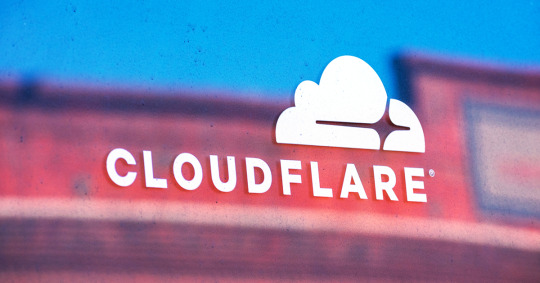
Cloudflare is a CDN, or content delivery network, that offers free and paid versions of its service. Cloudflare has several features that make it an essential tool for any website owner interested in protecting their site.
Cloudflare is a CDN or content delivery network.
Essentially, Cloudflare acts as your own personal internet traffic director. Instead of sending all traffic from your website directly to your hosting provider (or wherever else it's going), Cloudflare routes some of that data through its own servers first. This helps speed up performance since the information doesn't have to make so many stops on its way to you—and it also makes sure that malicious users can't exploit any vulnerabilities in the sites they're trying to hack into.
Cloudflare is also a security platform: It helps protect against DDoS attacks by analyzing incoming web traffic and identifying potential threats. And finally, Cloudflare is a domain registrar so that if you ever decide to change hosts (for whatever reason), continuing using their services is easy—you'll just need to transfer ownership over onto another provider's name servers before doing so.
Cloudflare has both a free and paid version.
Cloudflare has a free version for personal, small business, and non-profit websites. The only difference between the paid and free versions is that with the paid version you can optimize your site by adding custom domains (e.g., mywebsite.com), removing ads, adding SSL, etc.
Cloudflare protects your website from threats and malicious activity.
Cloudflare helps you avoid problems like distributed denial of service (DDoS) attacks, brute-force attacks, and malicious bots by blocking these types of attacks before they impact your site. This can save you a lot of time, money, and headaches in the long run.
In addition to defending against cyberattacks on your website, Cloudflare also blocks fraudulent traffic that could be used as a form of identity theft or other illegal activities such as botnet control panel access or credit card fraud. So whether it's hackers trying to hack into your server or someone who wants to use stolen information from fake accounts created through automated scripts (i.e., bots), Cloudflare offers protection against all online threats.
Cloudflare improves site performance by speeding up loading times.
Cloudflare caches your content, so your site's visitors don't have to wait for your server to send it to them. This process is called “reverse proxying.” Cloudflare's caching is faster than a regular CDN because it's closer to your visitors (so they don't have as far to go), and because it has more capacity than individual CDNs.
Cloudflare has multiple data centers around the world.
Cloudflare has always been a CDN, which means that it caches content on servers around the world. As a result, when they get traffic for a site, it may hit one of their data centers in the U.S., Europe, or Asia. The fact that they have multiple data centers means that if you are located in one of those regions and you request a website from Cloudflare's network—it will be served from your local server instead of from somewhere far away (or even overseas).
As the internet grew up over time so did its infrastructure and now there are plenty of options for storing data across continents regardless of where you host your website or application online. Cloudflare's CDN is designed to serve content as fast as possible by serving static assets such as images, CSS stylesheets, JavaScript files, etc. directly out-of-band before any HTTP requests reach your origin servers. This saves time since most websites use at least some static resources on their pages anyway!
Like a VPN, Cloudflare conceals your IP address.
Cloudflare is a content delivery network (CDN) that conceals your IP address and helps protect against malicious bots, nefarious intrusions, and identity theft. It also protects against brute-force attacks, DDoS attacks, and malicious activity.
Cloudflare helps protect against brute-force attacks.
Brute force attacks are cyberattacks used to gain access to websites and other online accounts by using large numbers of login attempts in rapid succession. This can be done manually or automatically, using scripts running on thousands of machines simultaneously. If successful, brute force attacks will give attackers access to your personal information (including credit card data), money in your bank account, and even the ability to steal the identity of another person entirely.
You can't always detect threats against your website by looking at your server logs or other common detection methods. Cloudflare has a suite of tools that can help you detect and block threats, including:
Real-time scanning for malicious IP addresses
DNS reputation analysis that looks across the entire internet to determine if domains are safe or dangerous based on where they are located and who is behind them.
Cloudflare isn't just for security; it also offers cache management and SSL certificate options.
Cloudflare offers a free SSL certificate that you can use to secure your website. This means that anyone who visits your site will see the green lock icon in their browser's address bar and know that they're on a secure connection, which is especially important if you collect sensitive information like credit card details or other private data.
Cloudflare's cache management feature can help speed up your website by storing some of the content on its servers so it doesn't have to be retrieved from yours every time someone visits. This cuts down on server load and makes pages load faster for everyone—especially those who are visiting from mobile devices because they tend to have less bandwidth available than desktop computers do (and therefore take longer).
If you have an existing SSL certificate but need help managing it properly, Cloudflare offers several features for managing these types of certificates as well as generating new ones when necessary.
Conclusion
Cloudflare is an effective tool that can help you protect your website. It offers many useful features, including security and performance improvements as well as the ability to cache content. It also makes it easier for people around the world to access your site by concealing your IP address and improving international load times. Reversed Out utilizes Cloudflare for the websites we host. Let us know if you'd like to learn more.
Contact Us
At Reversed Out Creative, we understand the challenges and opportunities presented by AI disruption. Our team of experts specializes in web design, SEO, graphic design, and digital marketing services. Reach out to us through our contact form to learn more about navigating the evolving job market and embracing the potential of AI. Together, let's shape a future that combines human ingenuity with the power of AI.
Content source: https://reversedout.com/what-is-cloudflare-and-why-do-i-need-it/
#Content delivery network (CDN)#Cloudflare#Website performance#DDoS protection#DNS management#Web optimization
0 notes
Text
Live Streaming CDNs – What Broadcasters Need to Know | HugeCount
Live streaming is becoming a fundamental element of our digital ecosystem. You see its use in sporting events, music concerts, and corporate seminars. However, providing viewers a smooth and nonstop live-streaming experience is no easy feat. The unsung heroes working behind the curtain are Content Delivery Networks (CDNs).The invisible infrastructure of the internet is content delivery networks (CDNs); it enables the distribution of web content. This article will examine CDN for live streaming, including what they are. Let us also acknowledge how they operate and why broadcasters require them. What Is a CDN? A Content Delivery Network (CDN) is a […]
Source: https://hugecount.com/tech/live-streaming-cdns-what-broadcasters-need-to-know/
0 notes
Text
¿Qué es el thermal throttling y cómo evitarlo en tu laptop?
El thermal throttling es un mecanismo de protección que reduce la velocidad de los componentes de tu laptop, como la CPU y la GPU, cuando alcanzan temperaturas críticas. Esta reducción de velocidad ayuda a disminuir la generación de calor y prevenir daños permanentes en el hardware. ¿Cómo identificar el thermal throttling? Algunas señales comunes incluyen: Rendimiento lento o inestable durante…
#2025#administración de servidores#almacenamiento en la nube personal#almacenamiento en línea seguro#almacenamiento en línea versátil#aumentar la velocidad#autenticación#Banda dual#BatallaFuturista#call of duty vangguard#cdn#cloudflare#Combate#Compras en línea#Compras seguras#Conexión estable#configuración de cortafuegos#configuración de redes#Content Delivery Network#cpu#Cyber Monday#desinstalación de programas#elejir un notebook gamer#firewall#FPS#Frostbite#gpu#HDD#Historia#Inteligencia Artificial
0 notes
Text
How to Choose the Right CDN — AWS CloudFront Vs Cloudflare
Cloudflare vs CloudFront
Cloudflare and CloudFront are services that can help reduce your website’s load time. In addition to speeding up your content delivery and load times, they can provide many advantages to your organization. They both work similarly by distributing server loads across multiple servers, but they have fundamental differences. Cloudflare is a service that provides other application services such as DNS, load balancing, video streaming, DDoS attacks protection, web application firewall (WAF), analytics, domain registry, and more. At the same time, Cloudfront is just a CDN provider with the sole purpose of accelerating content delivery.
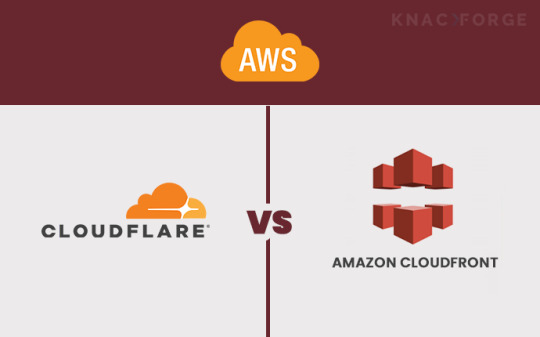
What is a CDN?
“Content Delivery Network,” or “CDN,” is a network of computers, servers, and nodes worldwide. You upload your website files to the ‘cloud,’ and then this content will be delivered via dedicated servers/nodes that are geographically closer to your end customers than the original hosting server.
What is Cloudflare?
Cloudflare is a buzzing brand in the CDN industry for its ability to provide cutting-edge performance capabilities and robust security features. It functions essentially as a reverse proxy, and its infrastructure is built from scratch, without any legacy system. It was originally intended to keep fraudsters off your website and stop them from harvesting emails. Their global infrastructure and algorithm provide advanced security systems along with performance enhancement. The incorporation of machine learning into the Cloudflare infrastructure enables it to continuously learn, adapt, and integrate to meet the complex needs of the ever-evolving technical environment.
What is CloudFront?
A relatively different or conventional CDN tool does not require you to change nameservers as you did in Cloudflare. Amazon Cloudfront is entirely different from the “Reverse Proxy” approach of Cloudflare.
Cloudfront is another well-known global CDN (Content Delivery Network) that retrieves data from the Amazon S3 bucket and distributes it to multiple data centers it acquires. It uses a network of data centers, often referred to as Edge Locations, to deliver the data centers, often referred to as Edge Locations. When a user requests data on the internet, the nearest edge location is routed, resulting in the lowest latency, low network traffic, faster access to content, and an overall better web experience.
Amazon CloudFront vs. Cloudflare: The Key Differences
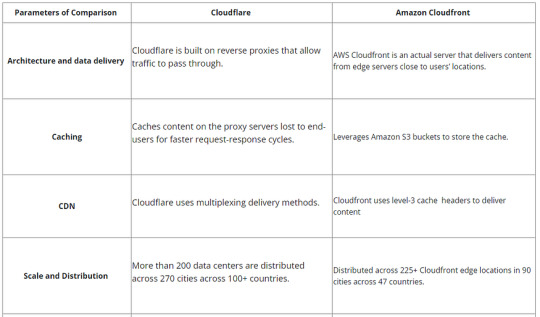
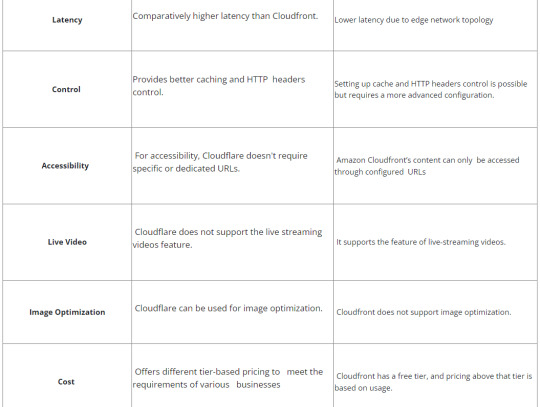
Cloudflare and AWS Cloudfront are both well-established names in the CDN industry. They both provide a wide range of features, which is why it can be confusing when choosing one of them. Amazon Cloudfront and Cloudflare are both highly recommended & suited Delivery Networks to users and can be used as per your requirements. Ultimately, the best choice depends on your specific business requirements. As you’ve seen, there are essential differences between the two services. So, to select the CDN service that best suits your business model, you’ll want to accurately and thoroughly understand the benefits and capabilities of both choices.
Still confused? KnackForge experts can help you choose the best option for your business! Contact our Cloud technical consultants today for a free consultation.
0 notes
Text
Global Content Delivery Network (CDN) market to Capture a CAGR of 16.63% Between 2023 and 2030 While Touching Approximately USD 48.52 Billion by 2028
Content Delivery Network (CDN) market was valued at USD 16.53 Billion in 2021 and is expected to reach USD 48.52 Billion by the year 2028, at a CAGR of 16.63%.
Introduction to Content Delivery Network (CDN):
A CDN is a group of geographically scattered servers that work together to provide content. Furthermore, rapid network delivery is made possible by these servers working together. Additionally, CDN makes it possible for the quick distribution of resources needed for loading online content, including Javascript files, HTML pages, movies, images, and stylesheets. The majority of web traffic is delivered through CDNs with the aid of large websites like Amazon, Netflix, and Facebook. Furthermore, CDN helps protect websites from damaging attacks like distributed denial of service (DDOS) operations. Content delivery networks are used by businesses to deliver quick static or dynamic content, mobile and e-commerce content transactions, media & entertainment, online gaming, videos, and other types of material. The reach of a content delivery network extends across a wide range of sectors, including media & entertainment, healthcare, education, mobile carriers, online gaming services and movies, online music stores, and many more.
Major Key Players:
Akamai Technologies, Microsoft Corporation, IBM Corporation, Limelight Networks, Amazon Web Services Inc., Cloudflare Inc., OnApp Limited., Google, AT&T, Deutsche Telekom AG, Stack path LLC., Fastly, G-Core Labs , Lumen Technologies, Citrix Systems, NTT Communications, Comcast Technologies, Rackspace Technology, Tata Communications, Imperva, Broadpeak, Quantil, Tencent Cloud, Kingsoft Cloud, EVG Corp
Get Full PDF Sample Copy of Report: (Including Full TOC, List of Tables & Figures, Chart) @
https://introspectivemarketresearch.com/request/14932
Market Dynamics and Factors Influencing Growth:
Drivers:
The demand for CDNs is still being driven by the exponential increase of online content consumption, which is being fueled by video streaming, e-commerce, and cloud-based applications. CDNs optimize content delivery, lowering latency and assuring seamless user experiences as more users access content from around the world. Furthermore, the development of edge computing is one of the key drivers. CDNs are essential for edge computing architecture in order to process and distribute data with the least amount of latency. This development is crucial to the sectors of IoT, AR/VR, and autonomous vehicles.
E-commerce platforms heavily rely on CDNs to ensure fast and secure delivery of web pages, images, and transactional data. The growing e-commerce industry fuels the demand for CDNs as businesses strive to provide seamless online shopping experiences.
Restraints:
The market for Content Delivery Networks (CDNs) is growing swiftly, but it is also restricted in a number of major ways that could restrict its growth and profitability. First and foremost, the high initial setup and ongoing maintenance costs of CDN infrastructure are a significant barrier to entry for many potential rivals, especially smaller enterprises and startups. These expenses, which pay for server deployment, data center maintenance, and ongoing network development, place a pressure on available financial resources. Additionally, the dynamic nature of online information and user behavior must be addressed by CDN providers. Delivering dependable, high-quality services is difficult because of the constant modification required by the rapidly altering content formats, device kinds, and customer expectations.
Opportunities:
The Content Delivery Network (CDN) market presents significant growth opportunities driven by the ever-increasing demand for online content and services. The rapid proliferation of streaming platforms, cloud-based applications, and e-commerce has amplified the need for efficient content delivery. Furthermore, the global shift towards remote work and digitalization has intensified the reliance on CDN services to ensure seamless access to data and applications, particularly for businesses and individuals working from home.
Inquire or Share Your Questions If Any Before the Purchasing This Report @
https://introspectivemarketresearch.com/inquiry/14932
Content Delivery Network (CDN) Market Segmentation:
Market Segmentation:
By Content Type: -
The dynamic segment dominated the market, attributed to the increased need for CDN services to enable online gaming, video streaming, and real-time Voice Over IP (VoIP).
Static Content
Dynamic Content
By Provider Type: -
Cloud CDN segment will dominate the market due the introduction of high-quality video content, the proliferation of smart and connected devices, the amount of rich media file material, and the increased availability of rich media on social media platforms will all contribute to the market's expansion in the years to come.
Traditional CDN
Cloud CDN
P2P CDN
Telecom CDN
By End User: -
Media and entertainment segment accounted for the largest revenue share, with the increasing demand for online streaming and VOD services, the media and entertainment sector are moving to a digital distribution model and expanding significantly. This principally necessitates optimizing the data and network delivery.
Media and Entertainment
Advertising
E-Commerce
Healthcare
Business and Financial Services
Research and Education
Other
For this report, Introspective Market Research has segmented the Content Delivery Network (CDN) Market based on region:
Regional Outlook (Revenue in USD Million; Volume in Units, 2023-2030)
North America: The expansion of the region is positively impacted by the rise in internet information access. Additionally, the presence of well-known businesses like the Microsoft Corporation, which has its headquarters in Washington, D.C., and government initiatives are encouraging market expansion in the region.
new markets, and enhance customer experiences.
North America (US, Canada, Mexico)
Eastern Europe (Bulgaria, The Czech Republic, Hungary, Poland, Romania, Rest of Eastern Europe)
Western Europe (Germany, UK, France, Netherlands, Italy, Russia, Spain, Rest of Western Europe)
Asia Pacific (China, India, Japan, South Korea, Malaysia, Thailand, Vietnam, The Philippines, Australia, New Zealand, Rest of APAC)
Middle East & Africa (Turkey, Bahrain, Kuwait, Saudi Arabia, Qatar, UAE, Israel, South Africa)
South America (Brazil, Argentina, Rest of SA)
#Content Delivery Network (CDN)#Content Delivery Network (CDN) Market#Content Delivery Network (CDN) Market Size#Content Delivery Network (CDN) Market Share#Content Delivery Network (CDN) Market Growth#Content Delivery Network (CDN) Market Trend#Content Delivery Network (CDN) Market segment#Content Delivery Network (CDN) Market Opportunity#Content Delivery Network (CDN) Market Analysis 2022#US Content Delivery Network (CDN) Market#Content Delivery Network (CDN) Market Forecast#Content Delivery Network (CDN) Industry#Content Delivery Network (CDN) Industry Size#china Content Delivery Network (CDN) Market#UK Content Delivery Network (CDN) Market
0 notes
Text
Server Saturday: Delivering Content at Lightning Speed - Understanding Content Delivery Networks (CDN)
Welcome to Server Saturday, where we dive into the world of content delivery networks (CDNs)! Today, get ready for an entertaining and informative journey through the magical realm of CDNs. We’ll explore how CDNs deliver content at lightning speed, ensuring a delightful user experience. With the help of funny analogies and cheerful emojis, we’ll make even the most novice readers understand the…
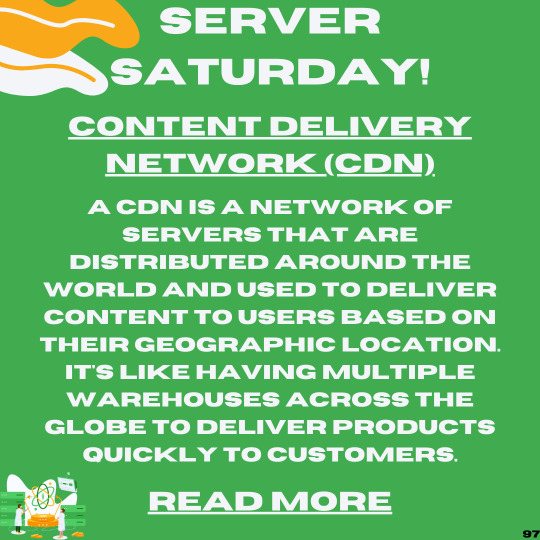
View On WordPress
#analogies#caching#CDNs#content delivery networks#emojis#enhanced security#global reach#scalability#super speedy couriers#website performance
0 notes
Text
I might be shutting down the site soon. The cost every month is starting to become a burden, especially now that I have a 7000 euro expense coming next year.
The site costs me about 90 to 95 euro each month to keep up and running smoothly and there haven't been donations for a very long time to help out. Now I can lower the cost by hosting everything locally on my home internet but it isn't equipped for the kind of traffic frtools experiences until I get fiber early next year. Nor will my internet be suitable for US visitors due to the distance, my current host has all images mirrored in a US data center to ensure fast loading through a CDN (Content Delivery Network).
I've not made a final decision yet. This was definitely a fun and very worthwhile project to have done, I learned a lot of things that has furthered me in my career.
If you want to ensure the site stays available then I urge you to toss me a ko-fi or a patreon as any donation helps offset the expenses : )
https://ko-fi.com/perryvanvelzen
https://www.patreon.com/frtools
#fr tools#frtools#fr#flightrising#flight rising#fr resources#fr skin#fr skins#fr skins and accents#fr accents and skins.#fr accents#fr accent
398 notes
·
View notes